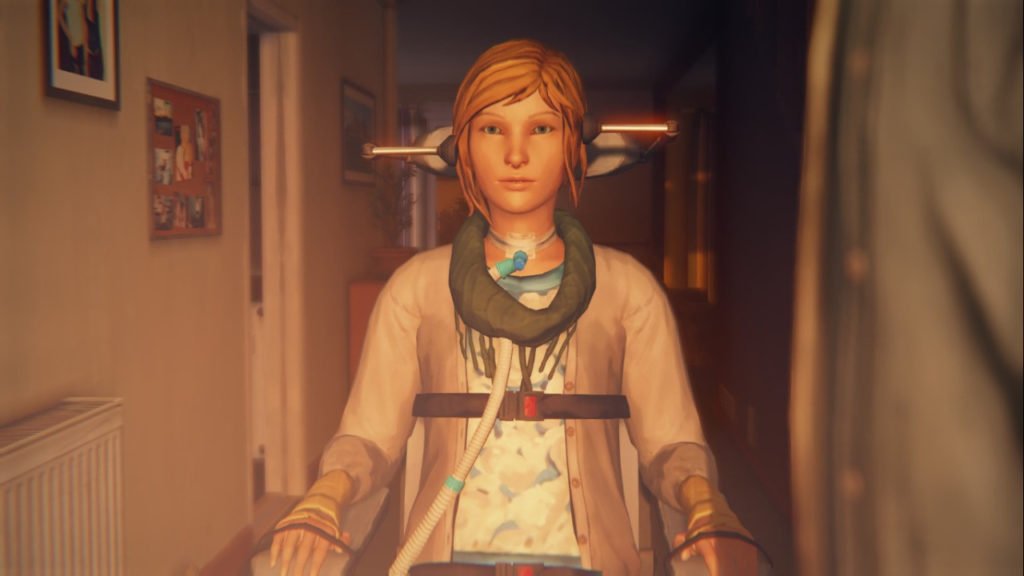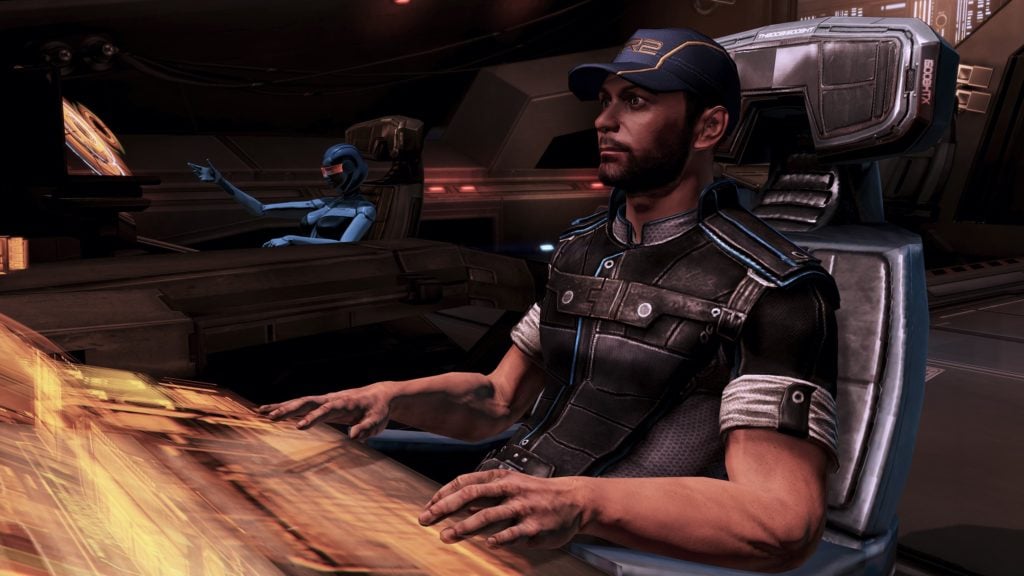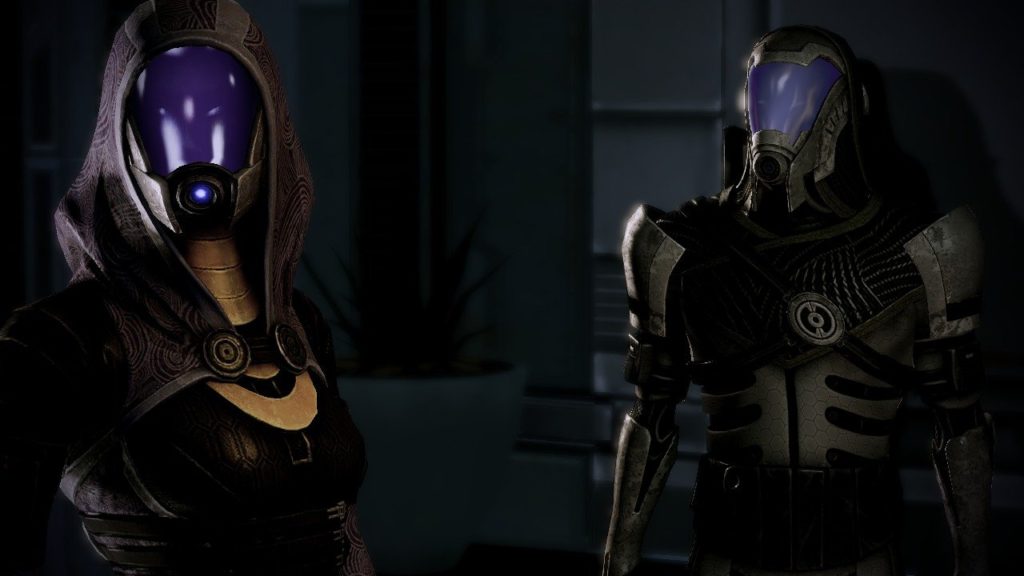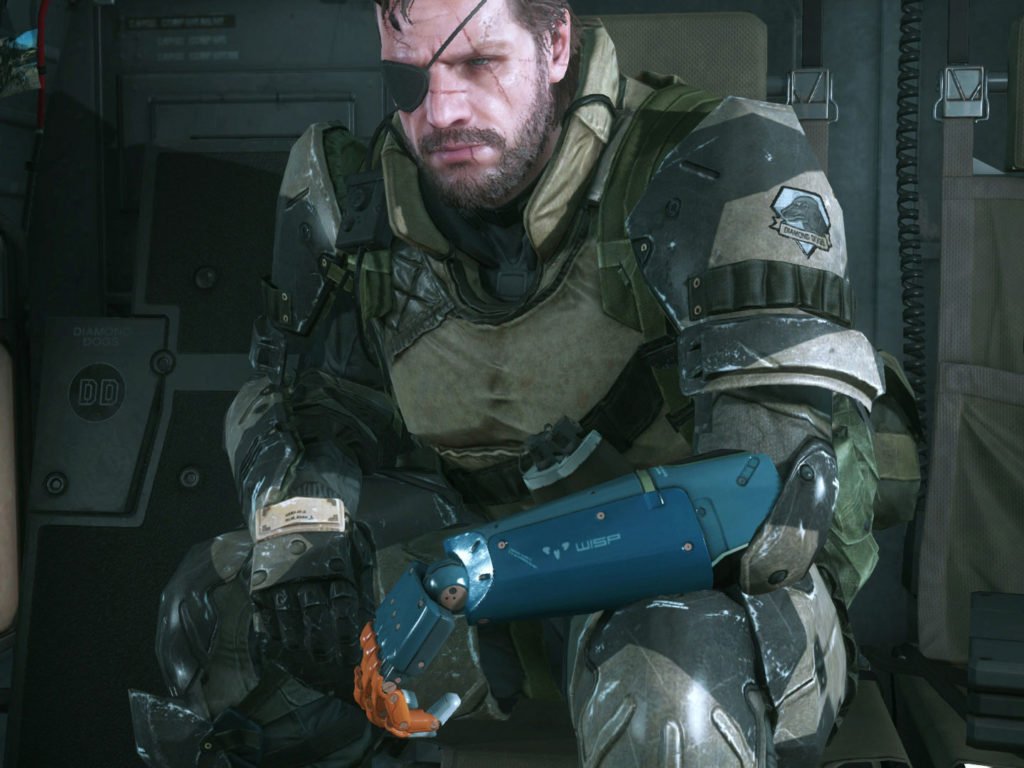Most video game protagonists are able-bodied men or women who are capable of running, jumping, climbing, and fighting for hours on end without getting tired. These characters don’t need to eat, sleep, or rest unless doing so is an integral game mechanic (e.g., survival games). Needless to say, characters are rarely realistic, especially the soldier-of-fortune characters who can carry 500 lbs worth of guns and ammunition without any problem. Even when a video game character is portrayed with a fault or flaw, he or she is still not an accurate portrayal of a real person, and one might think the same is true of people with disabilities. But actually, characters with disabilities are, for the most part, portrayed accurately in video games. Despite that accuracy, however, there is always more game developers can do to make them more like real people.
Spoilers follow for Life is Strange
Those with disabilities are an integral part of our society. Some people are born with disabilities, while others develop them later on in life. The term “disability” is very broad and can describe anything from autism, to an amputated limb, to Amyotrophic Lateral Sclerosis (ALS/Lou Gehrig’s disease). Even medical conditions such as HIV, AIDS, and Diabetes are considered disabilities under the Americans with Disabilities Act (ADA). When most people think about disabilities, though, it’s in general terms, more often than not, with the image of a wheelchair.
People use wheelchairs for various reasons. Some people have leg amputations, others suffered a spinal cord injury, and sometimes people have neuromuscular disorders. Video game characters in wheelchairs are somewhat rare, but not non-existent. Chloe Price from Life is Strange, Bentley from Sly Cooper, and Taimi from Guild Wars 2 are three prominent examples, and out of all these characters, Chloe is the most realistic.

To be fair, Chloe is the only human out of the three, but Life is Strange is also a “slice of life” story about a girl living in a contemporary world, going to high school, and using time manipulation powers. In an alternate timeline, Chloe was in a car crash that severed her spine, resulting in her requiring an electric wheelchair. Chloe is a fairly accurate portrayal of a person with a serve spinal injury. She cannot use her arms and legs and has trouble breathing. Furthermore, her wheelchair is a good depiction of a real electric standard wheelchair; it is large, bulky, and requires specially modified ramps and doorways to move from room to room. And finally, Chloe, as with a number of people who have had a severe spinal injury, requires outside care and medication.
Bentley’s wheelchair might seem like pure fantasy, but researchers are working to create wheelchairs that are similar to his. At the end of Sly Cooper 2, Bentley suffers a traumatic spine injury (not unlike Chloe Price), but thanks to his technical genius, he personalizes his wheelchair, complete with jump rockets and robotic arms. One might think that such a wheelchair could never be realistic, but that is only half true. Admittedly, real world wheelchairs are not effective at jumping, but robotic arms for wheelchairs do exist. The Personal Mobility and Manipulation Appliance (PERMMA), designed at the University of Pittsburgh, can be attached to wheelchairs to help people reach and manipulate certain objects, but it is not as advanced Bentley’s robotic arms. Furthermore, while jumping wheelchairs are currently nothing but a work of fiction, some wheelchairs, such as the IBOT, can at the very least climb stairs.
Now, Taimi and her wheelchair may also seem unrealistic, but a little research and character examination show how true to life Taimi truly is. Taimi is an Asura, a race of diminutive geniuses who look a lot like Yoda, cry “Excelsior!” more than Stan Lee, and are always seen with their personal robotic servants, known as Golems. She has an incurable degenerative disease comparable to ALS, and like people with ALS she uses a wheelchair. Kinda. Taimi’s wheelchair is actually a modified Golem. Her Golem, Scruffy, also acts like a PR2 robot, which is a programmable personal robot designed in a collaboration between a robotics laboratory in Georgia, known as Willow Garage, and Georgia Tech. Furthermore, what also makes Taimi true to life is her personality. She wants to be as independent as possible. She is insulted if anyone pities her for her condition, and she does not accept help from anybody except Scruffy (or when the plot demands player intervention).

Despite perceptions, wheelchairs are not a “one size fits all” device. Instead, they are specialized machines designed for specific functions. Some wheelchairs are made for everyday use, while others are for sports participation. People even use one type of wheelchair for sports such as basketball and an entirely different type of wheelchair for marathon races. A wheelchair’s purpose affects its maneuverability. For example, standard wheelchairs are built to navigate most buildings and houses, while sports wheelchairs are designed to be faster and make sharper turns, thanks to angled wheels. In turn, those same wheels make sports wheelchairs wider than standard wheelchairs and thus less capable of navigating buildings and houses. Bentley’s wheelchair may look like a standard wheelchair, but it handles more like a sports wheelchair, and in reality it would look quite different.
Beyond those that require a wheelchair, not all disabilities are immediately visible. Some disabilities, such as genetic disorders, are mostly internalized, often hereditary or caused by random genetic mutation. Autism, Cystic fibrosis, and Hemophilia are all examples. While games don’t often include characters with genetic disorders, the ones that do actually contain extremely realistic portrayals, thanks in no small part to BioWare’s attention to detail in the Mass Effect franchise. Many gamers are likely familiar with the pilot of the Normandy, Jeff “Joker” Moreau. Joker spends most of his time in his pilot’s chair, and if players talk to him enough they discover he has “Vrolik Syndrome.” While this may seem like the name of a fictional disease, it is actually an alternative name for a very real condition: Osteogenesis Imperfecta.

The condition makes bones brittle and easily breakable, with eight types of Osteogenesis ranging from mild to fatal. Given that Joker’s limbs are straight, he probably has Type 1 Osteogenesis Imperfecta. Like Taimi and most people with disabilities, he doesn’t feel sorry for himself or let his disability get in the way of living his dreams. Joker claims (and demonstrates) that he is one of the best pilots alive. He says that he earned every single one of his commendations and managed to become top of his class through sheer talent and practice. Granted, Joker acknowledges that he has his limits; he admits that he can’t walk without using crutches and will never be able to dance without shattering his bones, but he still doesn’t let his limitations and knowledge of what he can’t do get in the way of what he can do.
Following in the footsteps of a realistic portrayal of Osteogenesis Imperfecta, BioWare also includes a true to life portrayal of immunodeficiency disorders in Mass Effect. These disorders are characterized by a malfunctioning or completely absent immune system that makes it easier to become sick and harder to fight off infections. BioWare tried something a little different and created an entire alien race that was analogous to people with immunodeficiency. In the Mass Effect series, the Quarians are an alien species with no immune system. They evolved on a planet that only had beneficial bacteria and other microorganisms and never had to develop the antibodies needed to fight off diseases present on other planets. These aliens are immediately identified by their environmental suits, not to be confused with the pressure suits of the Volus.

Without immediate medical treatment, something as seemingly inconsequential as a scratch can have potentially serious consequences for a Quarian, and the same is true for some people with immunodeficiency disorders. While Quarians can only take various antibiotics and immune-boosters to lessen the chances of infection, some humans (depending on their specific disorder) have the option of treating for their immunodeficiency with a bone marrow transplant. Aside from this little discrepancy, though, Quarians are a fairly realistic portrayal of people with similar disorders.
As realistic as each of these portrayals is, however, they are still not 100% faithful to reality. For example, Joker does not have the blue sclera, spinal curvature, or hearing loss present in many people with Type I Osteogenesis Imperfecta. This raises the question if any video game perfectly portrays people and their disabilities. Surprisingly, one such game exists — Katawa Shoujo, literally translated from Japanese as “Cripple Girls”. Before I continue, I want to stress that the term “cripple” is pejorative for people with disabilities. Despite the translation of the title, however, the game itself gives a strong portrayal of people with disabilities, so it is worth discussing.
Katawa Shoujo is a romantic visual novel where the player takes on the role of a boy with heart arrhythmia who goes to high school with girls who have different disabilities, ranging from blindness to double amputations. These girls have unique personalities and are not defined by their disabilities. Their disabilities are merely conditions they live with. Throughout the game, the player learns more about the girls, becomes good friends with them, and eventually starts dating one. However, if the player treats any of the girls like a damsel in distress, their relationships become strained, something that is often true of people with disabilities in the real word.

Katawa Shoujo might realistically portray characters with disabilities, but due to it being a visual novel, these disabilities aren’t translated into gameplay. Disabilities could, however, easily be worked into the mechanics of other games in a number of ways. A survival game could easily include a glucose bar to simulate how people with diabetes need to manage their glucose levels. Another game could temporarily make it difficult for a player to pick up objects when the protagonist receives a prosthetic.
Prosthetics are rarely portrayed realistically in video games, but that is likely because in games such as Deus Ex and Bionic Commando, they are always used as a high-tech science fiction device, adding abilities instead of restricting them. Game developers almost never show characters with real-life prosthetics, though realistic portrayals would not be too difficult with a bit of thought. Metal Gear Solid V, for instance, includes a real-life prosthetic in the opening level, even if the character animations are not true to life. While a prosthetic limb is not as dexterous as a natural limb and has a smaller range of motion, many people learn how to effectively use their prosthetic limbs for almost all daily tasks.

The number of ways that disabilities can appear in video games is downright staggering, and more often than not people with disabilities are presented as strong individuals and not as victims, whether they are heroes or villains. While these portrayals can always be improved, a truly accurate representation of people with disabilities might be impossible. One person with a disability may act completely differently from another person with the same disability. But at least we can take solace knowing that video game characters with disabilities are not hiding in the shadows.

